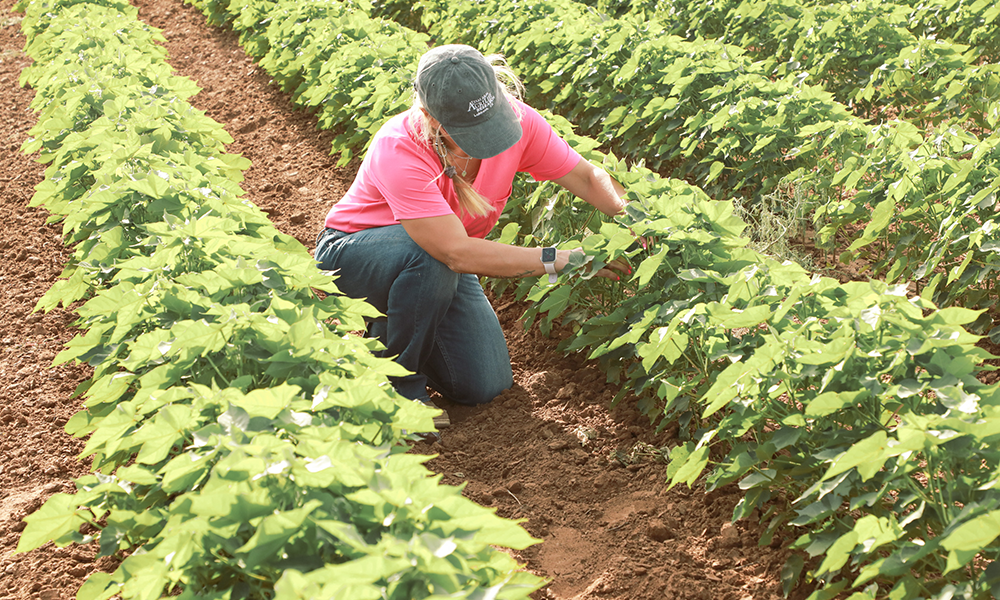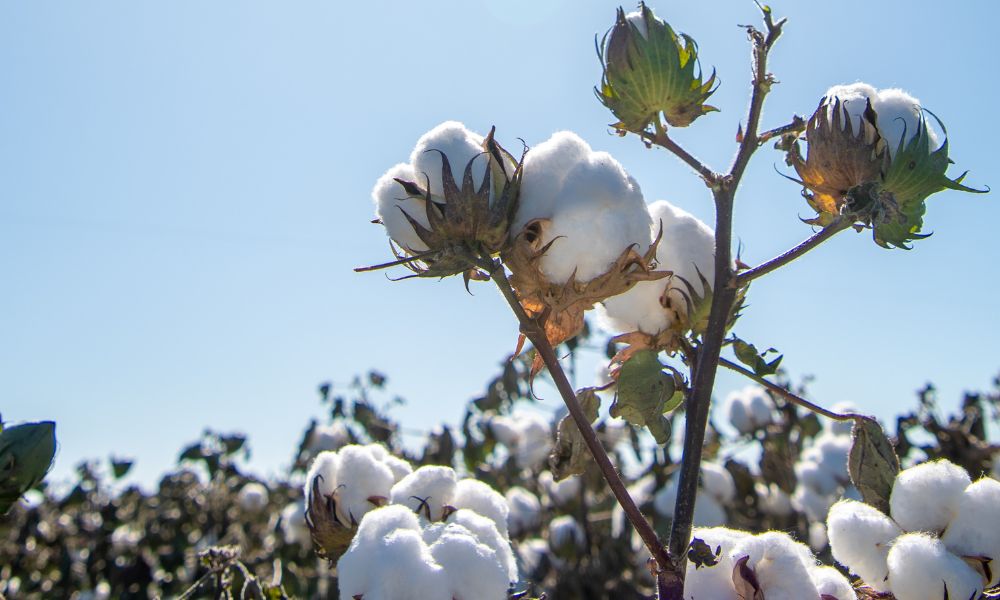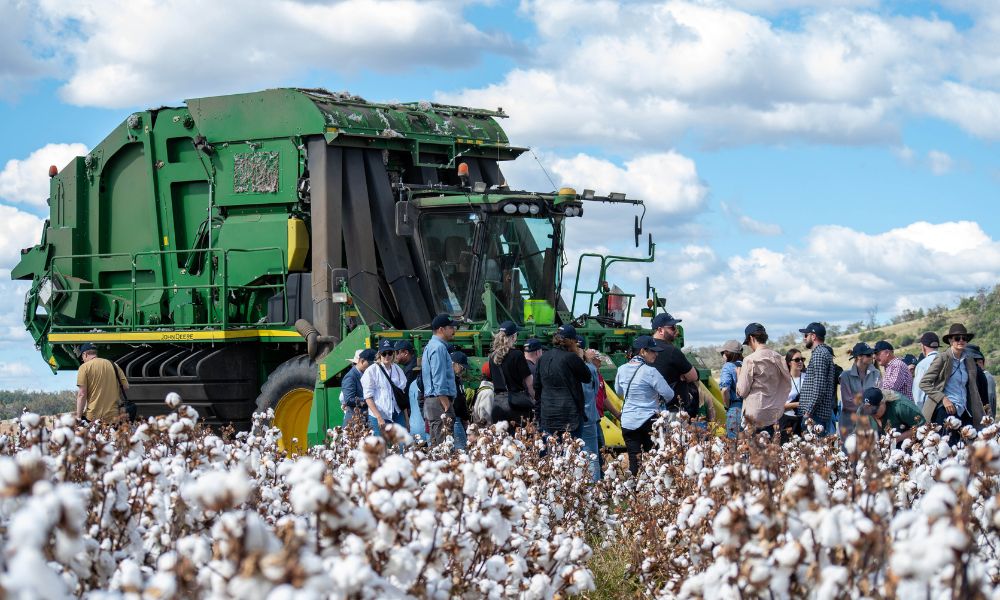How Precision Agriculture is Revolutionizing U.S. Cotton Water Use
August 5, 2022
A new Cotton LEADS℠ webpage offers insights into best practices and research in water stewardship and new irrigation system technologies.
Cotton farming’s water use efficiency has made leaps and bounds since the 1980s. New cotton varietals especially bred to tolerate drought have revolutionized where cotton can be grown and how much irrigation cotton needs to grow. In most of the U.S., cotton is farmed in locations unsuitable for many other crops, and it relies solely on rainfall. In fact, 64% of U.S. cotton requires no irrigation, 31% receives supplemental irrigation, and only 5% is fully irrigated.1, 2 Judicious irrigation can even increase overall sustainability metrics by ensuring other farm inputs (fertilizer, land use) aren’t wasted in yield loss due to water stress.
U.S. cotton’s water usage efficiency efforts continue today with a focus on advanced irrigation technologies, precision agriculture, and research on factors contributing to water stewardship like soil quality and soil health. But water stewardship for cotton farmers also means contributing to greater environmental sustainability like protecting water quality and aquifers and reducing plastic waste that contributes to ocean pollution.
Reducing Cotton Irrigation
Between 1980 and 2020, water usage rates for U.S. cotton growers dropped 38%.3 Over the same period, irrigation efficiency – the amount of water required to produce 1 pound of cotton lint – improved so much that by 2020, a little over 1 acre-inch of water can to produce 50 pounds of lint4 – enough to make more than 105 t-shirts.5
The rate of progress has slowed in the last decade, in part due to new irrigation standards being more widely adopted and in part because of climate change making prolonged droughts and intense rains that cannot soak into the soil more common. U.S. growers, researchers, and industry partners have made a commitment to increase irrigation water use efficiency by 18% despite these trends.

To learn more about how water use efficiency practices transformed and continues to transform the U.S. cotton industry, visit our Water Stewardship webpage.
Irrigation System Technology and Precision Agriculture
The U.S. cotton industry has made such significant strides in water use efficiency due to adoption of precision agriculture tools in all major irrigation techniques. Sensors placed at various depths in the soil help growers map and track where water is needed. Irrigation-scheduling technologies help growers choose when and where to irrigate. Advanced data models pull together available data on rainfall, temperature, soil, and other factors. Growers can these tools across three specific irrigation methods, each of which have their own unique technologies and benefits.
Surface Irrigation: Growers have largely adopted computer-aided programming that calculates optimal water flow rate and the proper size hole in the irrigation pipe to achieve that rate, reducing water usage by 25% or more.6
Sprinkler Irrigation: With variable rate irrigation growers can provide different amounts of water to different parts of the field based on the plants’ specific needs.
Subsurface Drip Irrigation (SDI): Expensive to install and maintain, but results in the highest water use efficiency for lint production by delivering water directly to the root zone of the plant, and has spread rapidly in water-limited areas over the past two decades.
Visit our Water Stewardship webpage to learn more about how cotton growers are using advanced irrigation systems to conserve water while improving yield.
Cotton Water Management Research
In 2022 alone, researchers across the U.S. worked on 20 active projects that advance better and more accurate ways to determine and respond to cotton’s water needs. Below, we highlight some of major research areas and the most exciting projects within them.
Conservation Practices: An Arkansas research study analyzed five years of data to determine the effects of soil health practices (specifically no-till and cover crops) on cotton water use efficiency and yield.
Soil Composition: A suite of studies in Tennessee determined that silt loam soil types did not require irrigation under certain weather conditions, while coarse textured soils benefitted from supplemental water under the same conditions.7 This information can help growers build targeted irrigation plans and improve water use efficiency.
Precision Irrigation & Advanced Water Delivery Systems: A recent project with the USDA Agricultural Research Service focused on developing automated, real-time control systems for scheduling irrigation, which could dramatically increase water use efficiency for cotton producers.
Natural Rainfall Capture: The U.S. cotton industry is supporting projects that research water detainment and retainment systems as a technique for capturing natural rainfall, reducing sedimentation from surface water runoff, and recharging local aquifers. These projects both help to improve both water availability and water quality.
Read more of the latest research on cotton water use efficiency and irrigation technologies at our Water Stewardship webpage.
Across the U.S., industry and academic partners are creating more ways to give cotton growers hands-on opportunities to learn about irrigation technologies that increase their water use efficiency and soil health practices that reduce soil and water run-off, improving their water quality stewardship. The result is a committed focus on reducing water use and improving water quality, and the U.S. cotton industry expects to continue to make progress on both over the next decade.
See how growers, producers, retailers, brands and customers in the U.S. cotton industry contribute to worldwide water stewardship efforts by reducing plastic pollution through events like Plastic Free July.
3 Field to Market: The Alliance for Sustainable Agriculture. (2021.) Environmental Outcomes from On-Farm Agricultural Production in the United States. National Indicators Report, fourth edition
4 Field to Market: The Alliance for Sustainable Agriculture. (2021.) Environmental Outcomes from On-Farm Agricultural Production in the United States. National Indicators Report, fourth edition.
6 University of Arkansas System Division of Agriculture Research & Extension. (2022). “Computerized hole selection.” Accessed July 11, 2022














Recent Comments